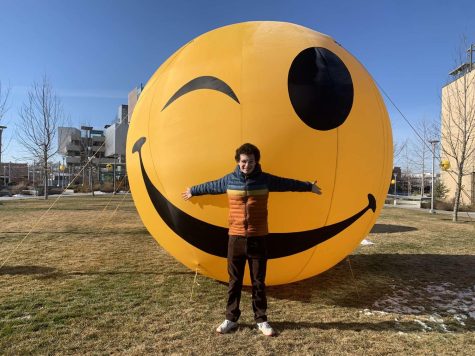How Boise is Combating the Spread of Covid… With Poop
“St Luke’s was forecasting models that had margins of error of plus or minus ten cases, our testing has shortened that gap to five.”
November 20, 2020
Covid, oh how it has controlled our lives! From the first moment when schools shut down in March to the moment of me writing this, almost every one of my actions, decisions, and thoughts have been directly influenced by Covid-19. Everyone wants to fix this problem, but in order to do so we must first get the right data and the right people in charge.
Nowhere is there a more clear example of this than at the wastewater treatment facilities here in Boise, Idaho. The work that they have been doing testing for traces of Covid in the sewage and using that data to create models predicting infection has been commended by the CDC as some of the most forward thinking work in the nation.
I was able to sit down with Steve Burgos, the Head of Public Works here in Boise, and talk to him about how his team is gathering information from our sewage to help us get one step ahead of the virus.
To understand why the testing is effective, we must first understand how the testing works and when they began to test. “Back in March, Boise started studying wastewater epidemiology,” said Burgos. Wastewater epidemiology is looking at our sewage and testing it to determine how much viral load is in it.
From the data update daily on the city of Boise website, the average amount of virus in the wastewater is around two million virus copies per liter. With a recent spike on Thursday, November fifth, sending the total skyrocketing to eight million virus copies per liter, followed by about four and a half million a day in the following week.
“What this is doing for us is giving us a leading indicator, meaning that we have an idea of what cases will be like in the future,” Burgos explained. This is in opposition to a lagging indicator, which is the number we get from positive test results per day. “While these lagging indicators are useful, hospitals would like to have leading indicators so that they could prepare ahead of time,” commented Burgos about the subject.
But what must be done with the data is at a city level, and if we don’t respond to the spikes adequately and in time the results we get will all be for naught. “The first thing we do is contact Central District Health,” said Burgos on the matter. This allows CDH to prepare its facilities more effectively for the incoming number of Covid cases. “Saint Luke’s has also begun using our models,” vocalized Burgos.
As of right now, the hospitals in Boise and in most of Idaho are overflowing. People in Twin Falls have had to send patients up to Boise because there just aren’t enough hospital beds in the Magic Valley. The recent spike in Covid cases on the fifth of November has allowed hospitals to batten down the hatches and prepare for the worst ahead of time, which is incredibly valuable time that they’ve been handed by the alertness and effectiveness of this system.
“St Luke’s was forecasting models that had margins of error of plus or minus ten cases, our testing has shortened that gap to five,” explained Burgos. The data from the wastewater treatment plants has led to the city considering a mask mandate, which is what Burgos hoped to accomplish from the gathering of this data.
As for controversy, there has been thankfully little to none of it. “At the start of the testing we got lots of weird emails asking how they were identifying the virus,” said Burgos, “but once you start explaining the science to them they understand what’s going on. There’s no argument about the science, no argument questioning if the testing is effective or not, just covid deniers.” The way Burgos and his team have handled this situation and keeping their results free from political and public controversy has been key in providing the region with accurate, efficient leading data factors.
The work done by the city and Burgos is substantial to our everyday lives. Their team has just been a small part of the large scale effort to keep Idahoans in Boise and its surrounding areas informed, safe, and confident in their elected officials. The work being done In Boise is among the best in the nation when it comes to wastewater epidemiology, and our city has been an example to all others around the nation of how to use every resource available to you to combat this deadly virus that has ruined our lives. So, next time you go to the toilet to do your business, just remember you’re helping stop the spread of Covid-19. Good job, citizen!

Steve Burgos, the Head of Public Works in Boise, Idaho (City of Boise)



